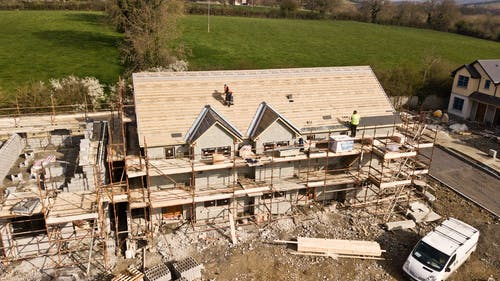
- Retaining walls: If you are planning to build retaining walls around your property, you can approach some of the top agencies, who specialize in developing retaining walls in Los Angeles to build the same. But a better option would be to develop it on your own. Granted it may not sound as easy as it seems on paper, but one of the first things that you need to consider is the soil – is it flat, bumpy,l rocky, or even sloping? Apart from this, you would have to decide on the base material and whether you need segmented blocks, stone, concrete, wood, and so on? But just remember, that no matter the material you choose for your wall, the slop has to be capped at 45 degrees and no more.
- Segmented blocks: You may be surprised when you check out some of the latest retaining walls. The segmented block systems happen to be the latest fashion as far as retaining walls are concerned. The great thing about these walls is that they may look quite complex but can be set up quite easily. And more than that, they would just be perfect for short walls. What makes these walls stand out is that they use the force of the earth to interlock with the other blocks and do not use much by way of intrusive mortar. As a result, segmented blocks tend to be strong and last for a long time – the perfect example would be the Mayan constructions which mostly used the segmented systems to reinforce the blocks to interlock.
- Gravity wall: When it comes to retaining walls, a gravity wall is one of the easiest as it utilizes the pressure of the walls against itself, to hold back the materials. The wall can be built, using various materials, from mortarless stone to segment concrete units. But what makes the gravity wall stand out is the fact that they can be utilized for tall walls unlike before, especially with gabions.
- Reinforced retaining walls: When you need to reinforce the retaining wall, you can use gabions. Normally, you reinforce the wall with the help of concrete bars as this can provide you with much-needed support.
- Concrete cantilever retaining wall: Concrete cantilever retaining walls is one of the popular options among construction engineers. That’s mainly because the cantilevered retaining wall happens to be built on a slab foundation, thereby making it strong. More importantly, you can fill the slab with gravel and backfill, which in turn can help prevent the retaining wall from slipping on the topsoil. More importantly, it is essential to maintain good drainage around the wall and the foundation as water stagnation leads to it weakening altogether.
- Counterfort retaining walls: One of the issues that you are bound to encounter when building retaining walls, is that the taller the wall is, the weaker the foundation can get. And that is why you use cantilever buttress supports, placed evenly around the base of the wall itself. This should help support the wall as well as take on the undue pressure and sheer force that occurs due to the height of the wall.
These are some of the retaining walls that you can build on your own. But just make sure that you check out all the requisite guidelines before you opt to do so, on your own.















